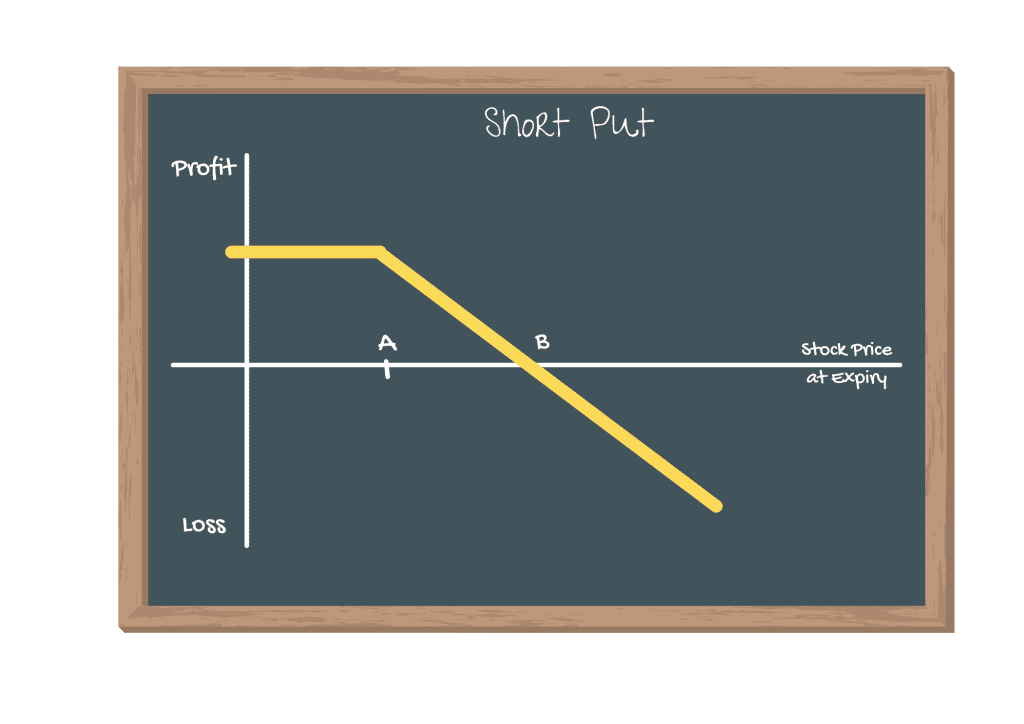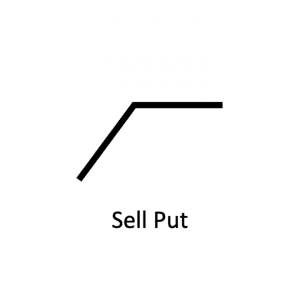
Description
The short put strategy involves selling put options, speculating that a stock will rise or stay flat. This strategy allows investors to earn premium income but risks substantial losses.
Short-selling a put is a simple, short-income strategy. Since a put is an option to sell, when you sell a put, you have sold someone the right to sell. As the price of the stock falls, it becomes more profitable for the buyer to sell at the strike price. The buyer will therefore exercise his right to sell, and you will be obligated to buy at the agreed price – the strike.
Therefore, only sell OTM puts, and on stocks that you would like to own at the strike price.
ITM | In-the-money | Stock price > put strike price |
ATM | At-the money | Stock price = put strike price |
OTM | Out-of-the-money | Stock price < put strike price |
Steps to Trading:
- Sell the put option with a strike price lower than the current stock price.

Remember:
- Each contract gives you the option to buy the number of the underlying asset as per the lot size. For example, for the HDFC BANK, buying 1 lot gives you the option to buy 550 shares of HDFC BANK.
- Options for the indices like NIFTY or BANKNIFTY are cash-settled. That is, if your call option closes ITM, you will be credited the amount of the profit and vice versa for OTM options.
Rationales:
- To make short-term income as the share develops price strength.
- To lower the cost of buying a share
Advantages:
- If done correctly, you can use Naked Puts to create a regular income from carefully selected stocks
- The Naked put is also a better way, arguably, of buying a stock at a cheaper price than in the current market. If you are exercised, you land up buying the stock at the strike price, while at the same time, you get to keep the premium you have already received.
Disadvantages:
- Naked puts expose you to unlimited risk as the stock falls to zero
- Although part of the basic four strategies, the naked put is not a strategy for the inexperienced. You must only use this strategy on stocks you would like to own at the strike price. Therefore, selecting the strike price is very important.
Exiting the Position:
- Buyback the put options you sold or wait for the sold options to expire worthless and keep the entire premium
Mitigating a Loss:
- Set up your stop loss, entry price, and target (SET) using the underlying asset
Cost | Net Credit trade. You receive premium for the sold puts |
Maximum Risk | Strike Price – put premium |
Maximum Reward | Put premium |
Break-even | Strike price – Put Premium received |
Margin Required | As per Margin requirement of broker and Stock Exchange |
Effects of Time decay | For this trade, time decay is your friend. Especially in the week running up to expiry. You want the option you sold to approach zero. |
Effects of Volatility | After you are in the trade, you want the volatility to decrease. This will decrease the price of the put you bought. So, if you choose to close your position before expiration, it will be cheaper to buy it back. |
Expert Tips:
- For this strategy, selecting the right strike price is very important. You want to establish a clear point of support or retracement and select the strike accordingly. Obviously, the lower the strike price, the better the probability of success. But this also means lower premiums. We need, to balance these two ratios – success ratio and risk to reward ratio, to suit our trading plan.
- Index options are considered a better alternative for this strategy since they tend to have lower volatility. This is because the volatility of the individual stocks tends to cancel each other.

